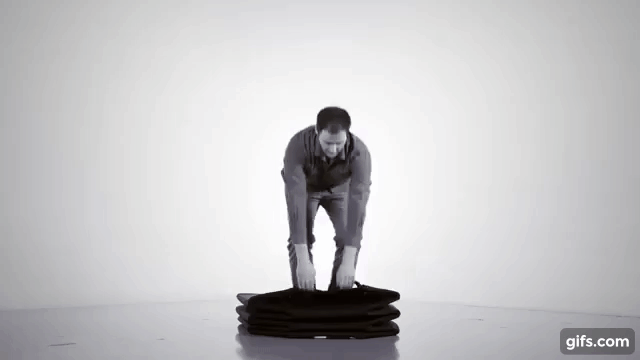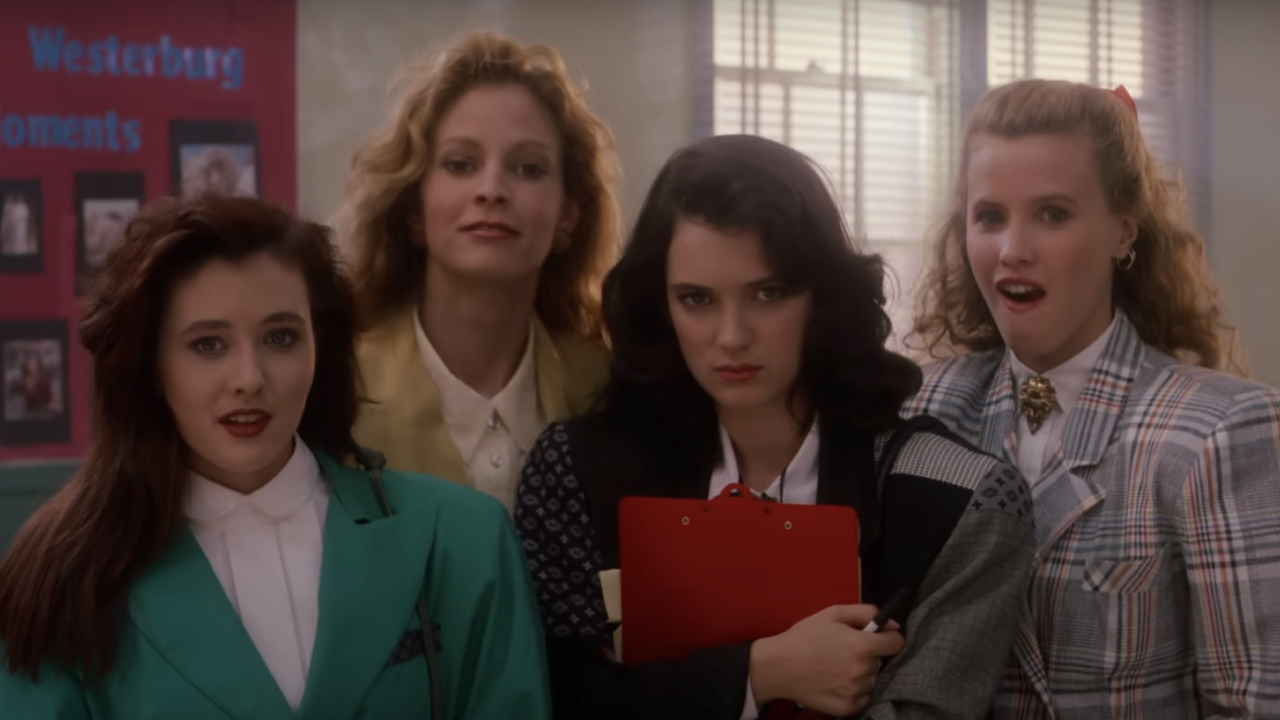Pull the String: Larry Karaszewski Remembers “Ed Wood” at 30
A look back at one of the best movies of the '90s by one of its writers.

Larry Karaszewski remembers it like it was yesterday. He and his writing partner, Scott Alexander, were having lunch in the commissary at Universal Studios, which had produced their scripts from “Problem Child” and its sequel. “We were being really typecast as people who write these junky kids’ movies,” Karaszewski recalls. “We actually took a meeting somewhere where we pitched an idea, a political idea, and someone said, ‘Oh my god, it’s a really good idea, but you guys are the guys who write ‘Problem Child’ movies.’” Eating at the commissary that day, Karaszweski glanced up and saw a poster for one of the old “Ma & Pa Kettle” films on the wall. “And I was like, ‘Who are those dudes?’ and I pointed to the names of the guys who wrote the ‘Ma and Pa Kettle’ movie. Like, Is this our fate?”
Luckily for all of us, that desperation led them to try something completely different: a winkingly self-aware yet character-driven biopic of Edward D. Wood Jr., commonly considered the worst film director of all time. They’d been fascinated with Wood since college, when the release of books like The Golden Turkey Awards and films like It Came From Hollywood marked the mainstreaming of ironic bad-movie appreciation. They saw a movie in Wood’s story, with his relationship with fallen horror icon Bela Lugosi as its spine.
Through their buddy Daniel Waters, they were friendly with director Michael Lehmann, who’d helmed Waters’s “Heathers” script but had just suffered through the release of the mega-flop “Hudson Hawk.” They thought he might be a good fit for their prospective screenplay. “The writers of ‘Problem Child’ and the director of ‘Hudson Hawk’ make a movie about the worst filmmaker of all time,” Karaszewski laughs. “It’s like they say, write what you know!”
The writers put together a short treatment, which Lehmann got into the hands of Denise Di Novi, a producer on “Heathers” who’d just landed a gig running Tim Burton’s production company; they all figured they could get Burton on board as an executive producer or presenter. “Tim read the treatment and kind of flipped out,” Karaszewski recalls. “And he sort of misunderstood why he was reading it—he wanted to direct it.”
Burton was circling “Mary Reilly” (which Stephen Frears would subsequently direct), so he and Lehmann made a deal: If Burton wanted to make “Ed Wood,” Lehmann would step back and produce it instead. If he didn’t love the script, Lehmann would step back in to direct.

Burton had to commit to “Mary Reilly” within six weeks, so Alexander and Karaszewski locked themselves in a room and wrote their first draft of “Ed Wood” in just under that time. “We turned it in to Tim on a Friday,” Karaszewski says, “and on a Sunday, we got a phone call that was basically, ‘This is my next movie. I’m dropping out of ‘Mary Reilly.’ To be completely honest, I don’t have any notes. I just want to make this movie, and make it in the spirit that it was written in.”
They had never written a biopic before, nor was it a genre they had particularly aspired to. “Biopics were always three hours long, really boring, and kind of cradle-to-the-grave,” Karaszewski says. “We wanted to cover the least amount of time possible, and so we really framed it as the Ed and Bela love story, and we wanted to go out on some kind of high. And that was going to be the making of ‘Plan 9,’ the movie that he’s known for… but in our movie, we’re celebrating it, as opposed to making fun of it.”
That spirit of good cheer extended to the entire screenplay. Before their movie, Karaszewski explains, “It was all about laughing at him. Oh, he’s the director who wore a dress when he was directing and it was all that kind of thing, he’s so bad. And after ‘Problem Child,’ Scott and I kind of came to the conclusion that no one sets out to make a bad movie. It’s actually kind of impossible to make a good movie. So look at Ed: He came out to Hollywood. He had dreams, he loved horror films and monster movies and science fiction movies. And he wound up making eight or nine of them! And he did it with his friends, and he had passion! What if we celebrate that? What if we celebrate him, rather than make fun of him?”
Burton fully understood and embraced that spirit and brought his own ideas to the picture’s aesthetic—particularly the choice to make “Ed Wood” look and feel like an Ed Wood movie. “That is Mr. Burton, a hundred percent,” Karaszewski says. It was a rolling series of adjustments, as is often the case in a collaborative picture like this one. Alexander and Karaszewski had never conceived it as a black-and-white movie, and Burton initially hadn’t intended it as one. It was a snap decision made during make-up tests; Martin Landau just didn’t quite look right, no matter how much or little of Rick Baker’s make-up they applied, until cinematographer Stefan Czapsky switched off the color on the monitor. “In turning off the color, Martin popped,” Karaszewski recalls. “I was like, Oh my god.”
But it wasn’t just a matter of shooting in black-and-white; throughout “Ed Wood,” Burton painstakingly recreates the peculiar lighting, stiff compositions, and all-or-nothing performance styles of Wood’s best-known movies. The screenwriter remembers how production designer Tom Duffield “got his big break to do a Tim Burton movie, so he was drawing these things that were pretty amazing—that were Tim Burton things. And Tim didn’t want that.” The chintzier-the-better philosophy extended to all departments. “The location scout had come back with a cool location, and Tim would say no, and then he came back with just, like, a shitty brick building in a parking lot. And he’d be like ‘Yes!’”
“Ed Wood” wasn’t initially a commercial success, but critics loved it, and Landau took home an Oscar for Best Supporting Actor. More than that, it set Alexander and Karaszewski on their proper career path. Hot on its heels, they sold Columbia Pictures on a movie about Larry Flynt, and realized, as Karaszewski put it, “Maybe this is a genre we could live in and really kick its ass. What if you made movies about the weirdos that we like, the pop culture fringe people?”
They felt some hesitancy at first, however. “At one point early on, we had a meeting with Jim Brooks,” Karaszewski says. “I think they talked to him about directing ‘Larry Flynt,’ and he said, ‘Well, what are you guys planning on doing next?’ And Scott was like, “Well, we’re not sure, maybe we won’t do another of these biopics. We don’t want to be too typecast.’ And Jim Brooks literally said, ‘You dummy. People spend their entire careers trying to define themselves,’ trying to find a brand, for lack of a better word. ‘You guys have done this, so go for it.’ That was a good piece of advice.”

Of course, these days, biopics have become an industry unto themselves—the prestige picture equivalent of the superhero movie, a seemingly safe bet for risk-adverse studios looking for, essentially, recognizable IP for Boomers and Gen-Xers. And there’s another big reason for their ubiquity, Karaszewski says: “Actors tend to win awards for these things. Martin won every award possible, every single performer in ‘O.J.’ [‘The People Vs. O.J. Simpson’] won multiple awards, Amy Adams won Best Actress at the Golden Globes [for their reunion with Burton, ‘Big Eyes’], Jim Carrey did too [for ‘Man on the Moon’], so there’s this thing where actors want to play these parts because they’re juicy… So that’s how they get made—because you get an actor attached.”
Many of these biopics are not terribly good, hoary and formulaic, filled with clumsy exposition and on-the-nose dialogue, and while Karaszewski is loathe to call anyone out (“I’m not going to tell them how to make the movies better, I’ll be out of a job!”), there are a few things he and Alexander have learned about writing a good, memorable, out-of-the-box biopic.
First and foremost: whenever possible, avoid the cradle-to-grave format. “A lot of biopics end with someone dying. You know, ‘Jerry Maguire’ doesn’t end with Jerry Maguire dying. Like, regular movies, they tell the story, and then they get out of it. Also—I don’t know why I’m picking on ‘Jerry Maguire’—but ‘Jerry Maguire’ doesn’t open with Jerry Maguire being born, or Jerry Maguire growing up, he’s ten years old and boy he loves sports or whatever.” (Also, “one of the things we really hated about biopics is old age makeup, ‘You sit down, dumb reporter! I’m gonna tell you my story,’ that kinda thing. We were just so sick of this shit.”)
Instead, for these writers, it boils down to a couple of key questions. “Why do we want to make a movie about this person?” he asks. “Well, we want to make a movie about Ed Wood because he had this really fascinating relationship with Bela Lugosi, this aging horror star. And why is Ed Wood remembered? He made the worst movie of all time. Well, just answering that question, that’s the structure of our movie. You know? Page 10, he meets Bela Lugosi! The third act, he makes ‘Plan 9.’”
Of course, if it were that simple, anyone could do it; Alexander and Karaszewski do it best, with their unique blend of wit, pathos, irony, and affection for the industry’s outliers, and they’ve been doing it for three decades now. “We went through our old pictures, and there were pictures of get-togethers and premieres of ‘Ed Wood,’ and Ed Wood’s widow and Conrad Brooks and Paul Marco were all there,” Karaszewski chuckles. “And we thought they were the oldest people on the planet Earth. And we looked at this picture, like, ‘We’re older now than Ed Wood’s widow was at the time.’ That was terrifying.”




















